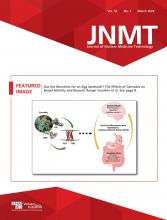Abstract
Previous reports suggest that a headrest made of carbon significantly influences cerebral blood flow (CBF) in the anterior and posterior regions by image reconstruction and attenuation correction (AC). The present study aimed to develop a headrest that reduces the influence of the AC process on human brain single photon emission computed tomography. Methods: To validate the performance of a headrest made of extruded polystyrene (XPS), 10 healthy controls and 43 patients with cerebrovascular disease underwent 99mTc-ECD SPECT using a carbon headrest and an XPS headrest. We evaluated the anterior and middle/posterior ratio of the brain regions in the filtered back projection (FBP)-Chang AC, ordered subset expectation maximization method (OS-EM)-Chang AC, OS-EM-CT-based AC (CTAC), and OS-EM No-AC (no correction for attenuation). Results: The anterior/posterior ratio with the carbon headrest was significantly higher than that with the XPS headrest in FBP-Chang AC and OSEM-Chang AC (P<0.001). There was no significant difference between the materials in OSEM-CTAC and OSEM-No-AC. The middle/posterior ratio did not differ to a statistically significant extent in any correction process. Conclusion: Brain SPECT image acquisition with a headrest made of XPS in processing by the FBP/OSEM Chang AC method enables the influence of the headrest to be reduced in brain SPECT image, especially in anterior and posterior brain regions.







